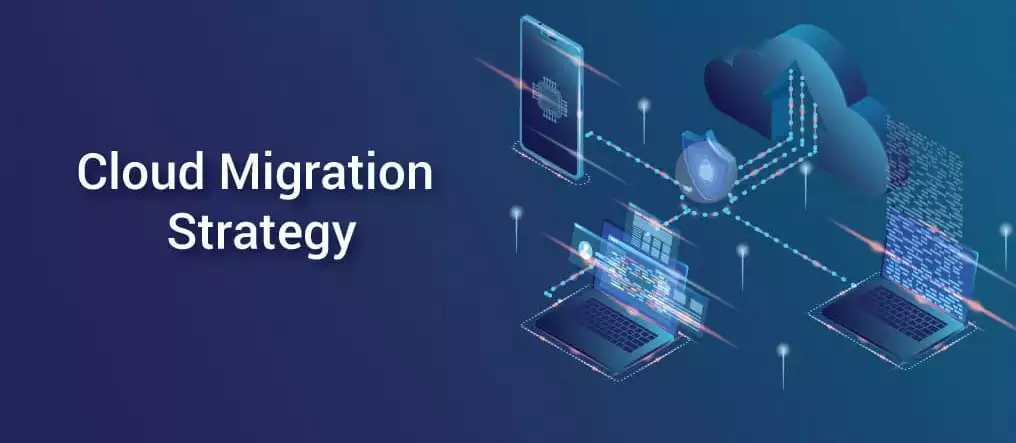Key Elements for a Successful Cloud Migration
Cloud migration aims to move vital data, applications, and business objects from the organization’s on-premises computers to the cloud. There has been a tremendous boom in Cloud Migration due to its ability to take a business forward, the potential of a system, and the increase in client satisfaction/reliability. This article will discuss the key elements of successful cloud migration.
What is cloud migration?
In cloud migration, digital assets, services, databases, IT resources, and applications are migrated into the cloud, partially or entirely. Cloud migration also pertains to moving between clouds. Many organizations are opting to abandon outdated, increasingly inefficient legacy infrastructures, such as aging servers and potentially unreliable firewall appliances, or abandoning hardware or software solutions that are no longer performing optimally. Organizations are now turning to the cloud to gain the benefits of cloud computing. This is why so many organizations are migrating to the cloud, at least partially.To ensure the cloud solution’s compatibility with your business requirements, we must carefully analyze, plan, and execute the migration process to provide real-time performance and efficiency. Consider your strategy for migrating to the cloud, not only what you do when you get there. For example, what are your options for rebuilding applications for optimal performance in the cloud? Companies are asking: what is application modernization resulting from cloud migration?
Business of all sizes requires assistance in making their cloud journeys, as there are many questions to be answered along the way. Thus, many services firms can offer lift-and-shift cloud migration services or their classic modernization services, such as translation and re-platforming of conventional systems.
Different types of cloud migrations
The following are the main types of cloud migration:Re-host (lift & shift)
The application is moved from on-premises hosting to the cloud (infrastructure or platform service). Begin with the simplest items, the least dependencies, low business impact, and no regulatory constraints, and move to the most complex items as maturity increases.Re-platform
To reduce operational expenses, you migrate to an operating system version that supports the CNaaS Platform Standards when the application can support it.Re-factor
Updates are made to comply with enterprise and functional and security standards. These include Microsoft.Net, Java, and other updates.The Key Elements for Cloud Migration
Successful cloud migration requires six key elements.1- Cloud Migration Strategy Planning
When you move your entire organization to the cloud, problems may occur as you move from an on-premises/legacy system to a new system. Moving to the cloud is easy if you plan, set up, and plan correctly. When a cloud migration is mishandled, it can lead to information loss, security and privacy breaches, etc. Therefore, you should develop a strategy/roadmap for cloud migration that satisfies both your business requirements and objectives as well as the technological side of the project. Generally speaking, you need to focus on two areas: Migration of Applications, which involves moving existing applications to your new cloud platform. For some apps to be cloud-friendly, you might need to modify them. Data/Information Migration: Existing data/information must be migrated to the cloud and used with your migrated applications. Migration also includes conversions, schemas, databases, and many more.2- Cloud Migration Service Provider Selection/Finding
You need to consider your desired environment and requirements to select the right cloud platform provider. Using that particular cloud platform, you should look for facilities, tools, and services that make migration easy. Your responsibilities will depend on the type of cloud services you choose and use, such as IaaS, PaaS, or SaaS.3- Identify migration-related applications
Sometimes, applications may not be cloud-friendly because every application is different. Some may work better on a private cloud, while others may work better on a hybrid or public cloud. Therefore, you should thoroughly analyze the application before migrating it. Identify the applications running, the resources allocated and assigned, the configuration, and other details of your existing infrastructure before migrating it. By doing this, you’ll be able to examine your infrastructure better and make data migration easier. Here are some evaluations:1- Which applications/services can be moved directly?
2- Complexity of modifications to make the application cloud-friendly.
3- Look for services and tools offered by the cloud provider that ease the process of modifying workloads.
4- When migrating from on-prem to the cloud, the cost analysis must be conducted to determine whether the investment in cloud infrastructure is worthwhile and whether productivity increases.
5- After analyzing security and cost-effectiveness, the decision must be made about the best cloud environment (hybrid, public, or private).
6- An architecture must be validated and reviewed, as well as a list of applications that require migration and those that do not.
4- Data Security
During the migration from on-premises to the cloud, your data will be at risk of a breach as the vulnerability to the breach increases during the migration. Your business must have a migration team that recognizes all compliance requirements and requirements while handling its important data/The cloud resolution provided by your migration team should provide the right security measures to match the business rules for industries such as finance and e-commerce businesses. The majority of cloud providers provide encrypted data after successful uploads. Manage Data Access: You need to be aware of user access. With proper RBAC (Role-Based Access), you will be able to carry the information about users you want access to and provide them with access to complete their tasks.5- Execute the Strategy
It is amusing and exciting to migrate from on-premise systems to cloud systems. However, it will likely be an enormous job/task. Everybody should begin the migration in small, manageable steps to ensure continuity and consistency in business. You can learn how an application works and its sub-applications work by taking small, planned steps. Even though most of the data will be managed on a legacy system and applications are starting to migrate to the cloud, consistency will always be maintained. The initial phase of migration should include migrating less essential data first.6- Migration Evaluation
The post-migration evaluation is also important to check what was successful and what caused the issues. It would help if you also found a solution to the issues during the migration process. that is where the migration in small parts becomes useful, as all the records and tracks will be available to you. Optimizing your resources after the migration is always essential. as you move forward in the cloud, be sure the plans for distributing the migrated application resources are proper.Conclusion
Moving your applications and information to the cloud offers several advantages like reduced prices, inflated security and measurability, a lot of management, and gaining a competitive edge. However, there are many challenges organizations should resolve to migrate to the cloud successfully. These challenges will be overcome by properly using the cloud migration strategy. Following the small steps, while migrating, the key elements above offer you great scope and learning, ensuring no harm to the business.Download this Article in PDF format

Arashtad Custom Services
In Arashtad, we have gathered a professional team of developers who are working in fields such as 3D websites, 3D games, metaverses, and other types of WebGL and 3D applications as well as blockchain development.
Arashtad Services
Drop us a message and tell us about your ideas.
Fill in the Form
Blockchain Development


